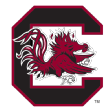Four top-25 teams lost to unranked opponents last week, and another three have gone down within the past 48 hours. With conference standings, projected brackets and fans’ guts all churning, you don’t need us to tell you that the best programs in college basketball this season are a tightly bunched, volatile group. But our Giant Killers project can show you which highly rated teams are likely to fall away from the pack in March.
For 11 years, we have refined a statistical model to find traits common to deep underdogs that pull off big upsets and heavy favorites that lose in the NCAA tournament. We’ll get deeper into the metrics in the coming weeks, but basically, over the years, we have found that successful Cinderellas tend to play high-risk, high-reward styles, increasing the variability of their scoring. Conversely, winning overdogs must choke off opponents’ risk-taking. They need to keep the ball by winning rebounding and turnover battles, and they must limit the damage of opponents’ pressure and long-range shooting. And just as these lessons led us to focus on Iowa State and Kansas last year, they are already spotlighting vulnerabilities among would-be contenders this season.
Here, then, are five giants who could play Goliath if the right David comes along in March.
 Villanova Wildcats
Villanova Wildcats
After watching three key contributors to last year’s 33-3 squad graduate or transfer, Villanova has retooled and once again ranks among the most efficient teams in the country at both ends of the floor. But the Wildcats’ style of play, which often spreads four men around the perimeter, just isn’t suited to generating the extra possessions that Giants need to ward off Giant Killers in the postseason. Villanova ranks 160th in the NCAA in offensive rebounding percentage, nabbing only 30.8 percent of their own missed shots, and 212th in defensive rebounding percentage, according to KenPom.com. An added negative: the Wildcats play at a crawl, averaging just 66.3 possessions per game (311th in the nation), which can make it hard to pull away from an inferior opponent -- as Villanova has discovered against Georgetown and Butler in the past two weeks.
In the 2014 tournament, the Wildcats couldn’t buy an offensive board against UConn and lost as a 2-seed to a No. 7 seed. Last year, a better Villanova team once again got out-rebounded at both ends and couldn’t overcome a subpar shooting night, going down in an 8-1 upset to North Carolina State. In a December matchup this season, Virginia not only grabbed 64 percent of their own missed shots, but also an astounding 59 percent of Villanova’s, and beat the Wildcats 86-75. That’s enough of a pattern to worry about.
 Maryland Terrapins
Maryland Terrapins
Last year, our model pointed to Maryland’s lack of offensive rebounding as a reason to mistrust the Terps at tournament time. This season, keyed by freshman big man Diamond Stone, Maryland is much stronger on the boards -- but the Terrapins are far looser with the ball. Maryland is committing turnovers on 19.6 percent of possessions, a rate that ranks 250th in the NCAA and is a key reason why Mark Turgeon’s crew is the fourth-best shooting team in the country (effective field goal percentage: 58.7 percent) but just the 18th-best offense (115.9 points per 100 possessions, after adjusting for schedule). It’s not like they’re gambling and compensating at the other end, either; Maryland ranks 256th in generating turnovers. Giants looking for safety cannot afford to give opponents extra possessions -- a fact demonstrated to Maryland by North Carolina last month, when the Terps had 22 turnovers and lost by 8, and by West Virginia in last year’s tournament, when they had 23 turnovers and lost by 10.
 North Carolina Tar Heels
North Carolina Tar Heels
As usual, UNC is protecting the ball, working it inside at a fast tempo, shooting well at the rim and dominating the offensive boards -- all useful traits for Giants looking to squelch Killers. This season, however, the Tar Heels haven’t been dipped quite fully in magical waters, leaving a glaring weakness: Carolina is allowing opponents to shoot a whopping 38.2 percent from downtown. That not only ranks 313th in the country, it’s also the worst mark for any UNC team in our database, which stretches back to 2002. Northern Iowa and Texas, two smart underdogs, handed the Tar Heels their only two losses of the season so far by shooting a combined 23 of 52 (44.2 percent) on three-point attempts. And you can see recent opponents taking the space North Carolina’s guards are giving them, stepping back and raining bombs: Florida State shot 20 3s against UNC on January 4, and Syracuse launched 31 five days later. When a Giant is vulnerable to a particular factor that makes a Killer dangerous, we call that a “peanut allergy.” Better break out the EpiPens.
 Providence Friars
Providence Friars
Conventional rankings like the Friars because they got off to a terrific start and are led by one of the nation’s best players in Kris Dunn; they placed 16th in the most recent AP poll, and Joe Lunardi projects them to be a 6-seed. But Providence ranks just 213th in the NCAA in effective field goal percentage (48.6 percent) and is above-average but not spectacular at rebounding at both ends. The Friars have also enjoyed good fortune in close games, going 4-1 in contests decided by four points or less, thereby boosting their wins total beyond the record their underlying stats suggest they deserve. As a result, most analytics systems see them as something like the 50th-best team in the country, low enough to be outclassed by a strong Killer. Indeed, Lunardi has them facing Texas Tech in a 6-11 tournament matchup, even though the Raiders currently rank 38th in BPI, eight spots above Providence at No. 46. Providence is the kind of Giant who could actually be an underdog in March.
 South Carolina Gamecocks
South Carolina Gamecocks
South Carolina is enjoying its finest season in at least a decade, but beneath the surface of its shiny 16-1 record, there's a mix of vulnerabilities. The Gamecocks throw the ball away on 19.2 percent of possessions (ranking 224th in the NCAA). They allow opponents to hit on 35 percent of 3s (ranking 210th). They are a good story, so they’ve been in the AP rankings and Lunardi has projected them as a No. 5- to 7-seed, but analytics suggest they are actually a top-40, not a top-25 team, so they could easily face a near-equal or even better NCAA tournament opponent. And this further spikes the mix: South Carolina has attempted about half as many free throws as field goals (50.4 percent, ranking fourth). In the past, our research has indicated that Giants that are unusually reliant on foul shots are vulnerable in March, maybe because they can no longer rely on home-court calls, maybe because Killers often excel at perimeter play. The Gamecocks are going to wind up with a lot of wins, but also deserve a few red flags.
